Metro lines push up real estate prices
In Ho Chi Minh City, high-end apartment projects are densely concentrated along both sides of the route parallel to Hanoi Highway. Several projects have been completed, while others remain under construction, all within the high-end segment. Current selling prices range from $4,000 to over $10,000 per square metre, compared to their initial prices of $1,600 to $2,000.
For instance, the selling price of apartments at the Masteri Thao Dien project, located near the metro line in Thu Duc city, has nearly doubled to around $3,750 per square metre compared to 2015.
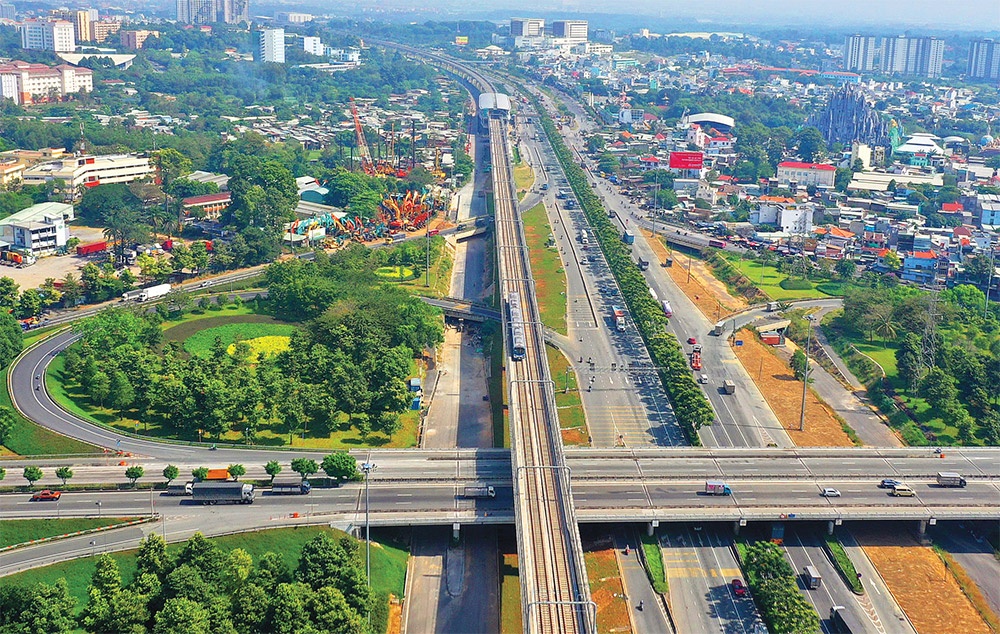 |
| Metro lines push up real estate prices, illustration photo - Le Toan |
Similarly, along Vo Nguyen Giap Street, from the Saigon Bridge to the roundabout intersecting Mai Chi Tho Avenue, projects like Thao Dien Pearl, Lumière Riverside, Gateway Thao Dien, and Estella Heights are now priced at almost $4,200 per square metre – double their previous value.
Notably, standout projects like The Monarch in Empire City, located next to the metro line passing Ba Son Bridge, are priced between $8,000 to $10,500 per square metre.
In Hanoi, two metro lines are operational: metro line 2A and metro line 3 (phase 1) linking Nhon to Hanoi Station. According to Savills Vietnam, apartment prices in Hanoi’s Cau Giay district, within a 500-metre radius of the Cau Giay-Nhon metro stations, have increased by over 40 per cent on-year as of October last year.
Nguyen Thi Hong Van, deputy director of Valuation and Consulting at Savills Hanoi, remarked that the metro line has significantly contributed to increasing property values along its route.
“More importantly, the metro system improves the social life of city residents. It reduces traffic accidents, alleviates congestion, and helps lower environmental pollution by running on electricity, saving travel costs for commuters,” Van said.
Experts point to transit-oriented development (TOD) as an urban development model that aligns with public transportation, enhancing population density in large cities. Ho Chi Minh City is planning urban development according to this model, with a vision extending to 2060.
Dr. Huynh Thanh Dien, an economic expert, highlighted Ho Chi Minh City’s focus on combining urban development with public transportation systems, a model widely adopted in major cities globally. “This model encourages road expansion, which raises housing demand along transportation axes, promoting real estate market growth,” Dien told VIR.
Given the limited available land in Ho Chi Minh City, housing development will prioritise apartment projects near public transportation hubs. Dien pointed out that this is a lesson learned from cities worldwide.
Commenting on the reasons behind the high selling prices of apartment projects near traffic hubs, Dien explained that ease of mobility is a key driver, with residents willing to pay a premium for convenience.
“The metro is the only means of transport in large cities unaffected by traffic congestion. Its convenience motivates many people to choose to live nearby,” Dien said.
Le Hoang Chau, chairman of the Ho Chi Minh City Real Estate Association, explained that the TOD model has encouraged real estate developers to acquire land on both sides of new roads and develop large-scale projects.
“Maximising land along newly opened routes and metro stations creates a transparent business environment in auctions, attracting investors. The city can recoup its infrastructure investments and reinvest in other projects,” Chau said.
“The TOD model helps facilitate modern urban planning and boosts the real estate market’s value. Reducing travel time and costs while improving employment opportunities also increases commercial real estate values, such as offices and retail.”
Since 2016, more than 30 housing and commercial centre projects have been developed along the first metro line, Ben Thanh-Suoi Tien. Existing projects along this route have seen price increases of 15-50 per cent compared to their original selling prices within a few years.
| Alex Crane, managing director Knight Frank Vietnam
Infrastructure development influences and is a result of good urban planning, it can and should affect development design and all properties surrounding it. Naturally, metro lines have a significant impact on the pricing of all types of real estate particularly residential zones, offices, malls, and hotels. In Asia, we have observed in India price increases of 20-50 per cent of residential properties within a 1-km radius of metro stations. Also in Singapore, during 2007-2008, when the downtown line was confirmed, condo developments near the stations increased in a broad range from 20-80 per cent and Kuala Lumpur similarly in 2023 by 30-70 per cent. In Ho Chi Minh City, average asking prices for apartments in District 2 along metro line 1 is approximately double than 2015 versus a market average of roughly 60 per cent over the same time. Expectations on price increases can lead to speculation, which may mean pricing may be unsustainable in the long term. In addition, price increases can lead to a ‘gentrification’ process, where lower-income residents can be displaced as they can no longer to afford in an area where there may be a new metro station, as has which has been witnessed in London and New York. Governments in the US, UK, Japan, and others use countermeasures to include strong affordable housing policies, and higher taxes on a proportion of land value increase as a result of infrastructure investment. Nonetheless, Vietnam’s commitment to infrastructure is commendable and is a fantastic driver of commerce and economic growth. Hai Nguyen, founder and CEO FinHome
Similar to other cities I used to live in, like LA, Singapore, and Santiago, the increase in real estate prices, both in terms of selling and leasing, alongside the introduction of metro systems can be seen as a direct result of the positive impact of mass transportation systems. Two primary reasons were claimed as increased accessibility and convenience and the high return. The metro enhances the accessibility and convenience of areas located near metro stations. These areas will definitely be attractive to potential homebuyers and tenants. In fact, both homebuyers and renters are willing to accept a premium price for the convenience of living near efficient and reliable public transportation options. In addition, the increasing demand for real estate assets near metro stations usually means higher returns for real estate owners: either increased property values when selling or through higher rental yields. However, the increase in real estate prices may also present challenges for affordable housing options in these areas. Due to the development of the metro system, the increased real estate values may lead to speculative behaviour in the real estate market. I strongly believe policymakers and real estate ecosystem stakeholders consider the balance between the positive impacts of metro systems and the need for affordable housing solutions for a diverse range of residents. David Jackson, principal and CEO Avison Young Vietnam
Transport infrastructure drives real estate value. Like highways and airports, metro lines create opportunities for trade, employment, and housing along their routes, leading to higher demand due to their connectivity and convenience. As a result, property prices in these areas often increase. Real estate projects near or adjacent to metro stations have a strategic advantage in location, as they attract residents, office tenants, and shoppers – those who directly use the metro. For example, by the end of 2023, apartment prices along metro line 1 of Ho Chi Minh City rose by 30-50 per cent from initial sales. Similarly, in Hanoi, office buildings near metro stations saw higher rental rates than other similar projects. Rising land prices require properties to create more values (financial and non-financial) and operational efficiency for both owners and users. In response to the rising land prices and limited land banks, locations worldwide, including Singapore, Hong Kong, London, and Tokyo, have applied the transport-oriented development model. It aims to create dynamic, liveable urban areas by concentrating jobs, housing, services, and amenities near public transit stations. These mixed-use developments combine residential, commercial, and entertainment spaces to draw in residents, workers, shoppers, and visitors, which boosts business revenue and increases metro use. |
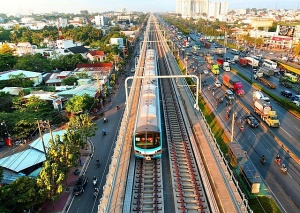 | Ho Chi Minh City needs nearly $35 billion for 10 metro lines The southern city wants to build 10 metro lines by 2060, over 510km in length, and with a total investment of nearly $34.5 billion. |
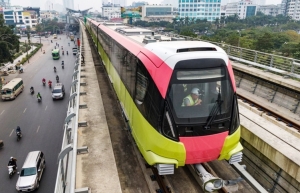 | Hanoi ready to open Nhon-Hanoi metro line The elevated section of the Nhon-Hanoi metro line is expected to officially open in July, following more than ten years of construction. |
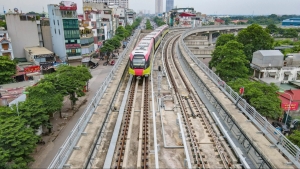 | Hanoi to develop comprehensive and modern urban metro lines Hanoi plans to invest over $55 billion to build a synchronised and modern urban railway network. |
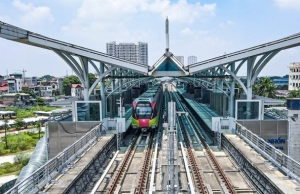 | Nhon-Hanoi metro line set to open on August 8 The elevated section of the Nhon-Hanoi metro line has finally been completed after nearly 15 years of construction, with commercial operations commencing on August 8. |
What the stars mean:
★ Poor ★ ★ Promising ★★★ Good ★★★★ Very good ★★★★★ Exceptional
Related Contents
Latest News
More News
- JustCo expands business into Vietnam (December 22, 2025 | 17:58)
- Sun Group breaks ground on $2 billion Van Don casino complex (December 19, 2025 | 18:14)
- Rare, beautiful, sustainable: the mark of iconic real estate (December 19, 2025 | 08:00)
- Owner-occupied housing stabilises, paving the way for new growth cycle (December 18, 2025 | 17:04)
- Unlocking urban potential of smart cities (December 18, 2025 | 16:50)
- Green finance offers 'passport' for Vietnamese construction, building materials firms (December 15, 2025 | 08:00)
- Gamuda Land commit long-term investment (December 12, 2025 | 11:49)
- HITC ties up with Evolution to develop AI and hyperscale data centres in Vietnam (December 11, 2025 | 12:09)
- Real estate deals boom via high-profile names (December 08, 2025 | 11:32)
- Industrial segment shaped by M&As (December 08, 2025 | 08:00)




 Tag:
Tag:


















 Mobile Version
Mobile Version